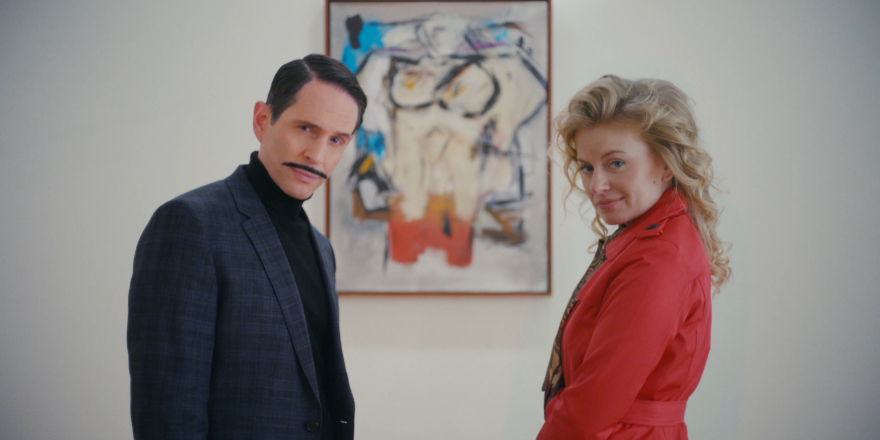In late 1985, “Woman-Ochre,” a painting by abstract expressionist master Willem de Kooning was stolen from the University of Arizona Art Museum. Thirty-two years later, the painting turned up in a home in rural New Mexico. The new documentary "The Thief Collector" is about the thieves who managed to successfully steal the painting.
The heist was pulled off by Jerry and Rita Alter, a modest-seeming couple who had moved from New York City to Cliff, New Mexico. He was a public school music teacher and she was a speech therapist. Like other infamous people, the Alters appeared unexceptional and the painting was found only after both had died. They’d hung it on a wall behind the door of their bedroom.
A nephew, who was named the Alters’ executor, hired the three owners of the Manzanita Ridge Antiques store in nearby Silver City to liquidate the estate, and they brought a truckload of stuff back to their shop.
The gentleman is a local artist, who knows de Kooning’s work, noticed the painting in a cheap gold frame and offered $200,000 for it, but said he thought it could be worth a lot more. The antiques dealers made calls, emailed photos, the FBI took over, and the story began to grow.

A range of people helped fill out the picture of what had happened. The antiques dealers and the local artist, museum curators, police in Grant County, New Mexico, FBI agents, the nephew and his adult son, Jerry Alter’s sister, former students in New York, neighbors, a volunteer for the Silver City Town and Country Garden club, who had taken donations from the Alters – and in a way, Jerry and Rita Alter themselves.
Rita kept precise records of the couple’s extensive travels, which listed where the couple were and when. Jerry wrote a book, "The Cup and the Lip," which tells a series of stories which seemingly describe fictional heists that may suggest other actual thefts, as well as why the Alters enjoyed thievery.

The de Kooning caper alone is a terrific story, but the characters who figure in the movie are also good material. The antiques dealers, who are not bumpkins, thought “Woman-Ochre” was just an ugly object on a wall, but they’re good detectives when it comes to reconstructing events and motives. The wisdom of the art world collides with three guys in a local cafe who joke that the painting stinks, and then gulp when they learn it might be worth $160 million. The great-nephew wonders if the title "The Cup and the Lip" rests on the similarity between the English word cup and the Yiddish word for head or mind – and that the book intentionally reveals the difference between what Jerry Alter thought and what he did.
Because the story of "The Thief Collector" is so improbable, I wish it were a less conventional movie. The interviews feel terribly responsible and proper, and the sober tone of these people hints that maybe they’re trying not to giggle. It’s a movie that behaves itself and minds its manners, and I wonder how it would look if someone of unruly spirit and imagination, like Errol Morris, had made it. Someone who saw through the events of the story to the spirit of the affair – two secretly larcenous teachers stealing one of the most expensive artworks in the world, just to keep it behind the bedroom door. And there’s even a seamy speculation that just possibly, Jerry murdered a handyman for having an affair with Rita, and dumped the body in the septic tank. You have to wonder about the Alters’ home life – did they love art, or just the thrill of crime?



